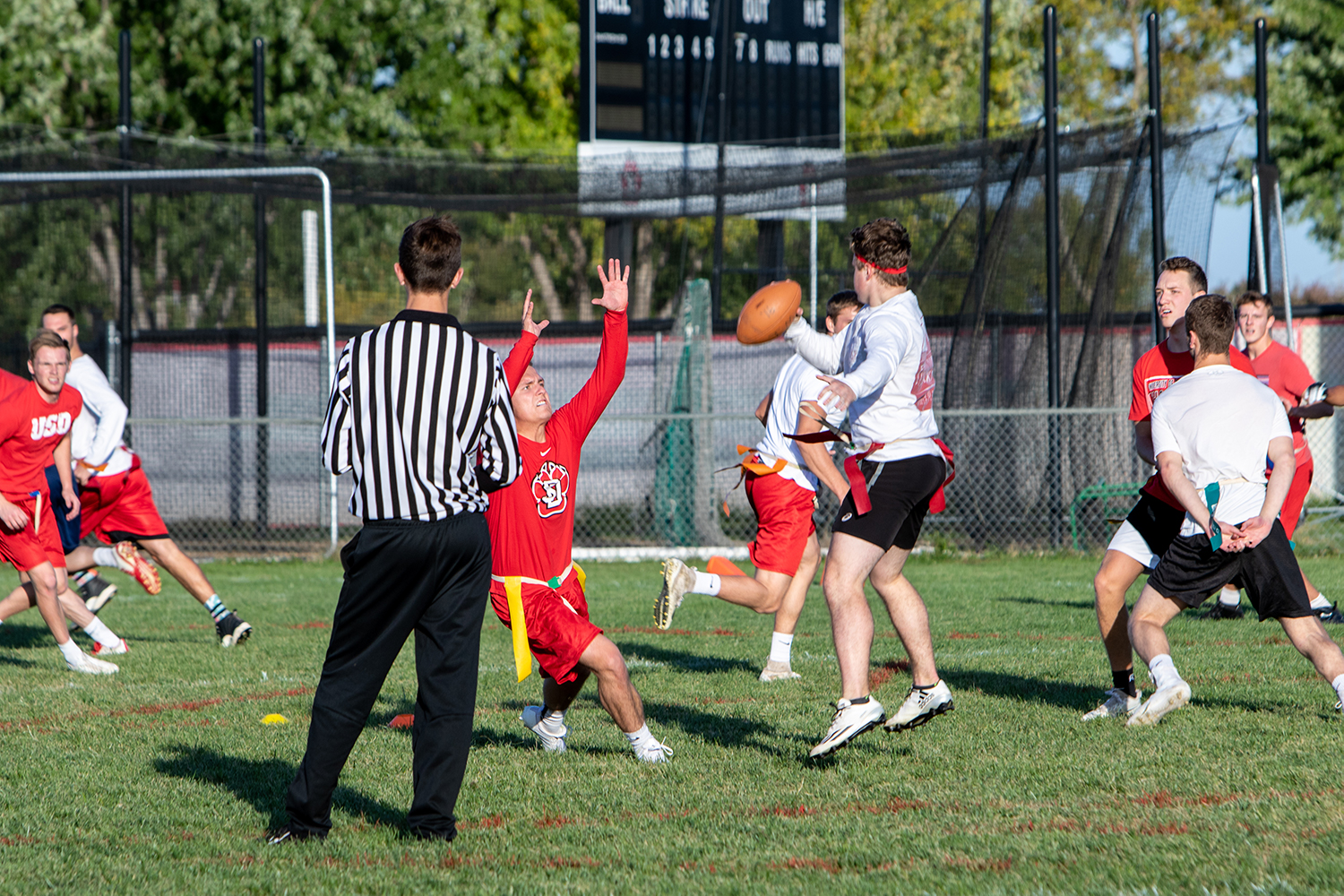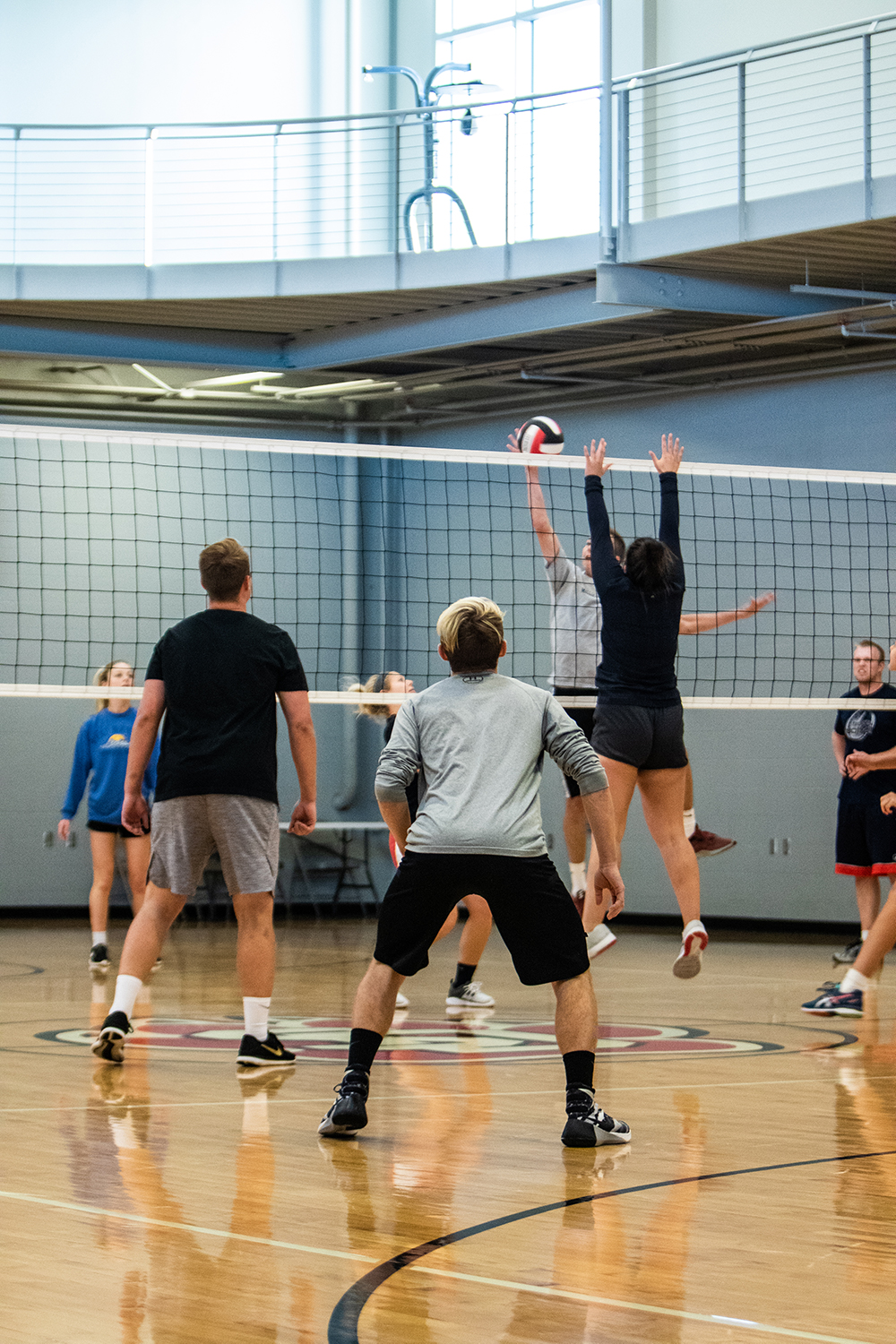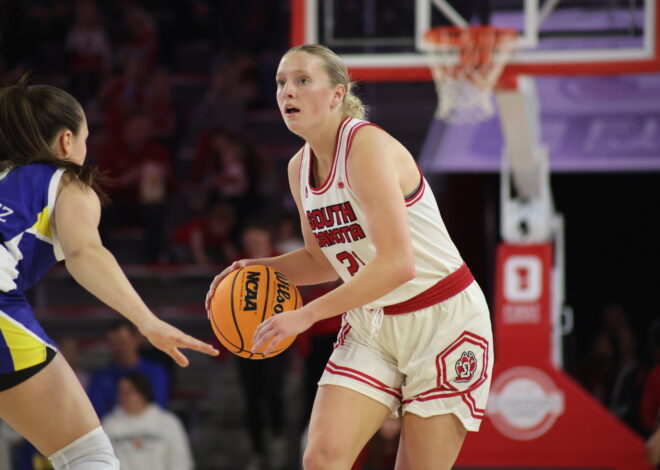
How the university keeps intramurals fair between student-and-non-athletes
Most students see intramural sports as a chance to compete against similar, plain old regular students. However, that’s not always the case.
If you’ve participated in an intramural sport, chances are you’ve actually squared off against a student-athlete. Athletes are allowed to compete in intramurals but must follow a different set of rules than the average student.
“Current student-athletes are unable to play on a team in the same or related sport they are currently on an athletic team for,” USD Assistant Director of Intramurals Connor Singhisen said. “For example, a current USD women’s basketball player would not be eligible to play in any form of basketball in the current academic year, be it redshirt or active roster player.”
Coaches on campus can also block their student-athletes from participating.
“I know some of the other coaches in different sports don’t let their athletes play intramurals,” USD thrower Callie Henrich said. “When it comes to track, it’s a lot stricter with the runners, because they use different body parts than what we (throwers) do.”
Henrich, who has played intramural volleyball for three years, said the guidelines aren’t too strict for throwers.
“With the throwers, there aren’t too many guidelines to follow,” Henrich said. “Basically, don’t do something to get yourself hurt. But our coach even is on a volleyball team and it’s pretty fun to see that and compete.”

In order to keep things fair, USD implemented a ruled that no more than two former collegiate athletes are allowed to be on the same team.
“If someone played baseball at Seward County Community College as a freshman and sophomore and another played softball at Black Hills State prior to transferring to USD, that would be their limit,” Singhisen said. “This would fulfill the two former collegiate players max for this team. If any other former student-athlete joined that played softball or baseball, that team would be illegal, and if discovered, would be removed from the league.”
Henrich said she thinks the rules are fair and added that competing with other friends that aren’t in her sport helps keep her balanced.
“We can bring in some of our friends that aren’t on our (track and field) team and get competitive with them,” Henrich said. “It’s a great way to stay competitive playing in a sport that isn’t your own with other people. That can get so grueling.”
She hasn’t noticed any flak from non-athlete students but said she could see why there could be some tension.
“None of the (non-athlete students) seem to have a problem with it,” Henrich said. “They’re just basically like ‘oh, you guys are so big’. That’s about it. They seem to know it’s all in good fun. I could see why they’d be intimidated though. We’re just trying to go out there to have fun and do something that’s not our sport because it gets really taxing to just do one sport, all the time.”

